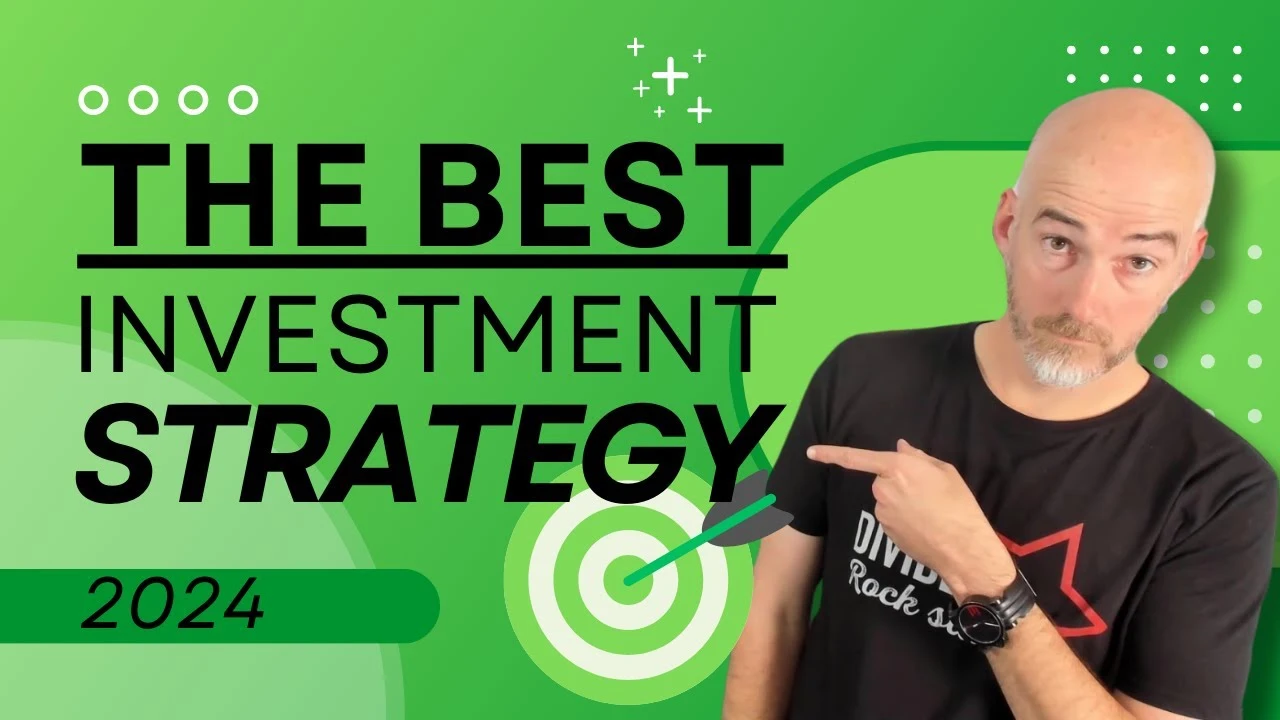Investing can be a highly rewarding endeavor, but it requires careful planning, research, and a keen understanding of market trends. As we approach 2024, several investment strategies are gaining traction. This article will delve into the top investment strategies for 2024, offering insights and guidance for both novice and experienced investors.
1. Diversification Across Asset Classes
Diversification is a timeless investment strategy that helps mitigate risk by spreading investments across various asset classes. This approach reduces the impact of a poor-performing asset on your overall portfolio.
Stocks and Equities: Investing in a diverse range of stocks, including large-cap, mid-cap, and small-cap companies, can help balance risk and reward. Growth stocks, particularly in the tech and healthcare sectors, are expected to perform well in 2024 due to ongoing innovation and consumer demand.
Bonds: Bonds are a safer investment compared to stocks. Government bonds, corporate bonds, and municipal bonds offer different levels of risk and return. With interest rates expected to stabilize, bonds can provide a reliable income stream.
Real Estate: Real estate investments, including residential, commercial, and industrial properties, can offer both income and capital appreciation. Real Estate Investment Trusts (REITs) are a more accessible way to invest in real estate without directly owning property.
Commodities: Commodities like gold, silver, and oil can act as a hedge against inflation. As global economic conditions fluctuate, commodities can provide stability in your investment portfolio.
Cryptocurrencies: Cryptocurrencies have become mainstream investment assets. Despite their volatility, they offer substantial growth potential. Bitcoin, Ethereum, and emerging altcoins can be part of a diversified portfolio.
Diversification is a crucial strategy for reducing risk and enhancing returns in your investment portfolio. By spreading investments across different asset classes, you can protect against the volatility of any single asset. Here’s how you can diversify effectively:
Stocks and Equities
Investing in a mix of large-cap, mid-cap, and small-cap stocks allows you to balance risk and growth potential. Sectors such as technology, healthcare, and consumer goods are expected to perform well in 2024.
Bonds
Bonds provide stability and income. Consider a mix of government, corporate, and municipal bonds. Government bonds are the safest, while corporate and municipal bonds offer higher yields with varying degrees of risk.
Real Estate
Real estate can provide both income and capital appreciation. Direct investment in properties or through Real Estate Investment Trusts (REITs) allows for diversification within this asset class.
Commodities
Commodities like gold, silver, and oil can hedge against inflation and provide portfolio stability. These assets often move inversely to stocks and bonds, offering a balancing effect.
Cryptocurrencies
Including a small allocation of cryptocurrencies like Bitcoin and Ethereum can provide high growth potential. Despite their volatility, these digital assets have shown substantial returns over the long term.
Implementing Diversification
Assess Your Risk Tolerance: Determine your comfort level with risk and adjust your asset allocation accordingly.
Regularly Rebalance: Periodically review and adjust your portfolio to maintain your desired asset mix.
Stay Informed: Keep up with market trends and economic indicators to make informed investment decisions.
By diversifying across various asset classes, you can build a robust investment portfolio that mitigates risk and maximizes returns.
2. Focus on Sustainable and ESG Investments
Environmental, Social, and Governance (ESG) criteria are increasingly important to investors. Sustainable investing not only aligns with ethical considerations but also offers competitive returns.
Green Energy: Investing in renewable energy sources such as solar, wind, and hydroelectric power is expected to grow. Companies involved in these sectors are likely to benefit from government incentives and increasing demand for clean energy.
Sustainable Companies: Look for companies with strong ESG ratings. These companies often demonstrate better long-term performance and resilience. Industries like technology, healthcare, and consumer goods are leading the way in sustainability.
Impact Investing: This involves investing in projects or companies that have a positive social or environmental impact. Microfinance, affordable housing, and education are examples of sectors where impact investing can make a significant difference.
Environmental, Social, and Governance (ESG) criteria have become essential considerations for investors seeking both ethical alignment and strong returns. Sustainable investments not only address pressing global challenges but also often demonstrate resilience and growth potential. Here’s how you can focus on ESG investments in 2024:
Green Energy
Investing in renewable energy sources such as solar, wind, and hydroelectric power is gaining momentum. These sectors benefit from government incentives and increasing consumer demand for clean energy solutions.
Solar Power: Companies specializing in solar panel manufacturing, installation, and maintenance are expected to grow as the demand for clean energy increases.
Wind Energy: Wind farms and related technologies are becoming more efficient, making them a viable investment option.
Hydroelectric Power: Investing in established hydroelectric companies can provide steady returns, given the reliability of water-based energy.
Sustainable Companies
Companies with strong ESG ratings often demonstrate better long-term performance and resilience. They are more likely to manage risks effectively and capitalize on opportunities related to sustainability trends.
Technology: Tech companies that focus on reducing their carbon footprint, managing e-waste, and promoting digital inclusion are attractive investments.
Healthcare: Firms that prioritize sustainable practices in drug manufacturing and distribution, as well as those working on innovative healthcare solutions, are poised for growth.
Consumer Goods: Companies that adopt sustainable sourcing, reduce plastic usage, and implement fair labor practices are gaining consumer trust and loyalty.
Impact Investing
This strategy involves investing in projects or companies that generate measurable social or environmental impact alongside financial returns.
Microfinance: Investing in microfinance institutions supports small businesses in developing countries, promoting economic growth and poverty reduction.
Affordable Housing: Investments in affordable housing projects provide safe, accessible homes for low-income families while offering steady returns.
Education: Companies and projects that focus on expanding access to education, especially through digital platforms, can deliver significant social impact and growth potential.
Benefits of ESG Investing
Ethical Alignment: Aligning your investments with your values can provide personal satisfaction and contribute to global sustainability efforts.
Risk Mitigation: Companies with strong ESG practices are often better at managing risks related to environmental regulations, social issues, and governance scandals.
Long-Term Performance: Studies have shown that ESG-focused companies tend to outperform their peers over the long term, as they are better positioned to handle future challenges and capitalize on emerging opportunities.
How to Invest in ESG
Research: Look for companies and funds with high ESG ratings. Many financial institutions offer ESG-focused mutual funds and ETFs.
Evaluate: Consider the sustainability reports of companies you’re interested in. Look for transparency, clear goals, and evidence of progress.
Monitor: Stay informed about the latest developments in ESG criteria and industry trends. Adjust your investments as necessary to maintain alignment with your goals.
Focusing on sustainable and ESG investments in 2024 allows you to contribute positively to society and the environment while potentially achieving strong financial returns. By prioritizing companies and projects that adhere to high ethical standards, you can build a portfolio that reflects your values and supports long-term growth.
3. Embracing Technology and Innovation
Technology is transforming industries at an unprecedented pace. Investing in technology and innovation can offer substantial returns.
Artificial Intelligence (AI): AI is revolutionizing sectors like healthcare, finance, and manufacturing. Companies developing AI technologies or using AI to improve efficiency and productivity are promising investment opportunities.
Fintech: Financial technology is reshaping the banking and financial services industry. Digital payment systems, blockchain technology, and online lending platforms are areas with significant growth potential.
Biotechnology: Biotech companies focusing on gene editing, personalized medicine, and drug development are at the forefront of medical advancements. These companies often experience rapid growth and can be lucrative investments.
Cybersecurity: As digital transformation continues, the need for robust cybersecurity measures increases. Investing in cybersecurity firms can provide high returns as businesses and governments prioritize data protection.
4. Exploring Emerging Markets
Emerging markets offer higher growth potential compared to developed markets, albeit with higher risk.
Asia: Countries like China, India, and Southeast Asian nations are experiencing rapid economic growth. Investing in these regions through stocks, bonds, or mutual funds can offer substantial returns.
Africa: Africa’s emerging economies present unique investment opportunities in sectors like agriculture, mining, and technology. The continent’s youthful population and expanding middle class drive demand for goods and services.
Latin America: Countries such as Brazil and Mexico are making strides in economic development. Investing in these markets can diversify your portfolio and tap into growing consumer bases.
5. Dividend Growth Investing
Dividend growth investing focuses on companies that consistently increase their dividend payouts. This strategy provides a steady income stream and potential for capital appreciation.
Blue-Chip Stocks: Blue-chip companies with a history of reliable dividend payments are attractive options. These companies often have strong financials and stable earnings.
Dividend Aristocrats: These are companies that have increased their dividends for at least 25 consecutive years. Investing in dividend aristocrats can provide a combination of income and growth.
6. Real Estate Crowdfunding
Real estate crowdfunding allows investors to pool their money to invest in real estate projects, providing access to high-quality properties without the need for substantial capital.
Commercial Properties: Investing in commercial properties such as office buildings, retail spaces, and industrial complexes can offer higher returns compared to residential properties.
Residential Properties: Residential real estate, including single-family homes and multi-family units, provides rental income and potential for property value appreciation.
Mixed-Use Developments: These projects combine residential, commercial, and retail spaces, offering diversified income streams and reduced risk.
7. Robo-Advisors and Automated Investing
Robo-advisors use algorithms to create and manage investment portfolios based on your risk tolerance and financial goals. They offer a low-cost, hands-off approach to investing.
Low Fees: Robo-advisors typically charge lower fees compared to traditional financial advisors, making them an affordable option for investors.
Personalized Portfolios: They provide personalized investment portfolios that are regularly rebalanced to maintain optimal asset allocation.
Accessibility: Robo-advisors are accessible to a wide range of investors, including those with limited capital.
8. Leveraging Tax-Advantaged Accounts
Maximizing contributions to tax-advantaged accounts can significantly enhance your investment returns by reducing your tax burden.
Retirement Accounts: Contributing to accounts like 401(k)s and IRAs allows your investments to grow tax-deferred or tax-free. Take advantage of employer matching contributions for additional growth.
Health Savings Accounts (HSAs): HSAs offer triple tax benefits: contributions are tax-deductible, earnings grow tax-free, and withdrawals for qualified medical expenses are tax-free.
529 Plans: These education savings plans provide tax advantages for saving for college expenses. Earnings grow tax-free, and withdrawals for qualified education expenses are also tax-free.
9. Seeking Professional Advice
While self-directed investing can be rewarding, seeking advice from financial professionals can provide valuable insights and help you make informed decisions.
Financial Advisors: Certified financial advisors can offer personalized investment strategies based on your financial goals, risk tolerance, and time horizon.
Investment Consultants: Consultants can provide expertise in specific areas such as estate planning, tax optimization, and retirement planning.
Educational Resources: Utilize online courses, webinars, and financial publications to enhance your investment knowledge and stay updated on market trends.
10. Staying Informed and Adaptable
The investment landscape is constantly evolving. Staying informed about market trends, economic indicators, and geopolitical events is crucial for making sound investment decisions.
Market Research: Regularly review market research reports, financial news, and analysis from reputable sources.
Economic Indicators: Keep an eye on key economic indicators such as GDP growth, inflation rates, and employment data.
Geopolitical Events: Geopolitical events can significantly impact financial markets. Stay updated on global news and consider the potential impact on your investments.
Investing in 2024 requires a balanced approach that considers both traditional and innovative strategies. Diversification, sustainable investing, embracing technology, exploring emerging markets, and leveraging tax-advantaged accounts are among the top strategies to consider. Whether you choose to manage your investments independently or seek professional advice, staying informed and adaptable will be key to achieving your financial goals. By implementing these strategies, you can navigate the complexities of the investment landscape and build a resilient and prosperous portfolio.


